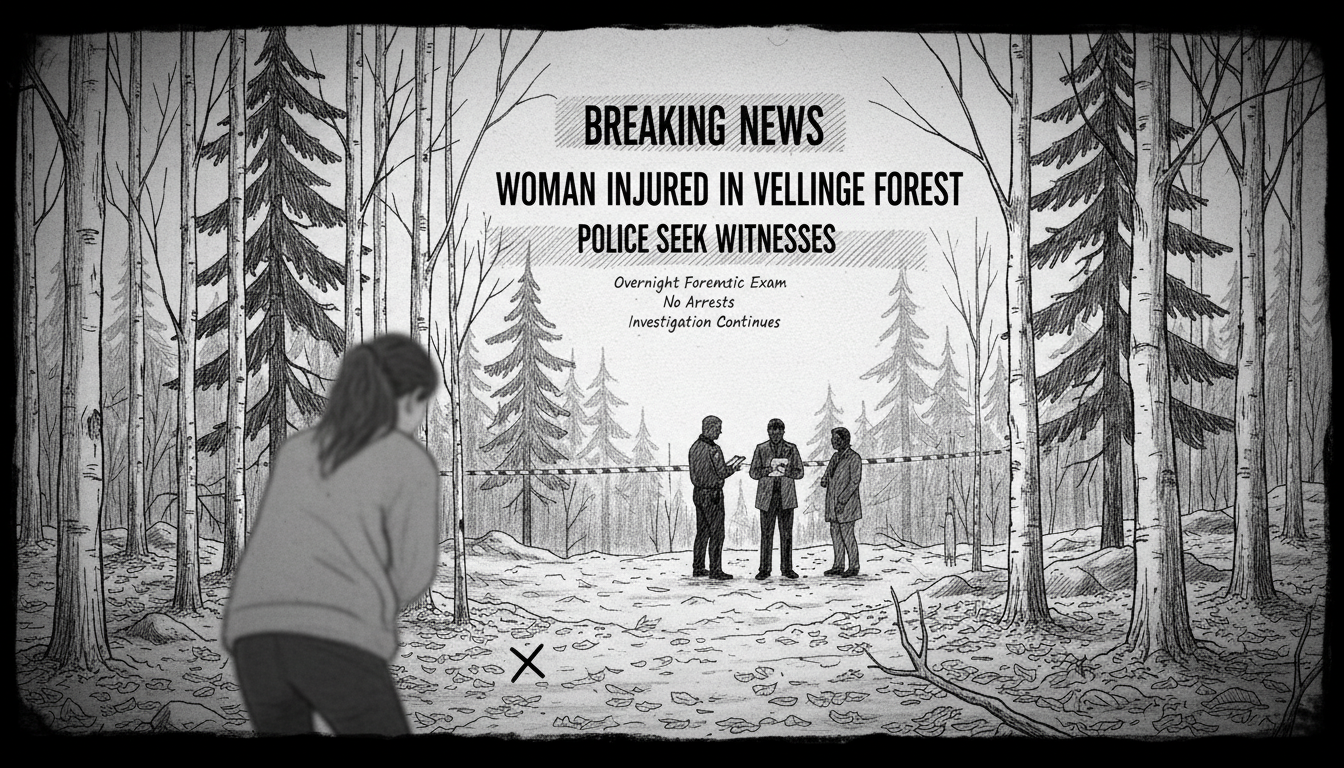Police in southern Sweden are investigating an incident that left a woman injured in a forested area of Vellinge Municipality. Authorities have not yet classified the event as a criminal act but continue to gather evidence from the scene.
The incident occurred outdoors in a woodland location during evening hours. Police officials spoke with the injured woman throughout the evening as their investigation unfolded. No arrests have been made in connection with the case.
Law enforcement has launched a public appeal for witnesses who might have observed activity in the area during the relevant time period. They urge anyone with information to contact police at 114 14. The location remained cordoned off overnight for technical examination, with police dog units deployed to assist in the search for evidence. Barricades were removed early Sunday morning.
This incident highlights ongoing concerns about public safety in Sweden's rural and forested areas. While Sweden maintains relatively low violent crime rates compared to many European nations, isolated incidents in natural settings often draw significant public attention and police resources. The country's extensive right to public access (Allemansrätten) means forests and natural areas remain widely accessible, creating both recreational opportunities and potential security challenges.
Police investigations in Sweden typically follow meticulous procedures, with forensic teams and specialized units like dog patrols deployed even in early stages. The decision not to immediately classify the incident as criminal suggests authorities are keeping all possibilities open while evidence collection continues. Similar cases in recent years have sometimes involved everything from accidental injuries to attempted assaults, making thorough investigation crucial.
For international residents and visitors, this case serves as a reminder that while Sweden remains generally safe, basic precautions in isolated natural areas remain advisable. The swift police response and ongoing investigation demonstrate the efficiency of Swedish law enforcement in rural municipalities. The outcome of this case will likely influence local security discussions and potentially impact tourism in the Skåne region during the popular summer season.
What happens next depends largely on witness statements and forensic evidence. Police may upgrade their investigation if evidence suggests criminal activity, or close the case if the injury appears accidental. The community awaits answers while authorities continue their work.

